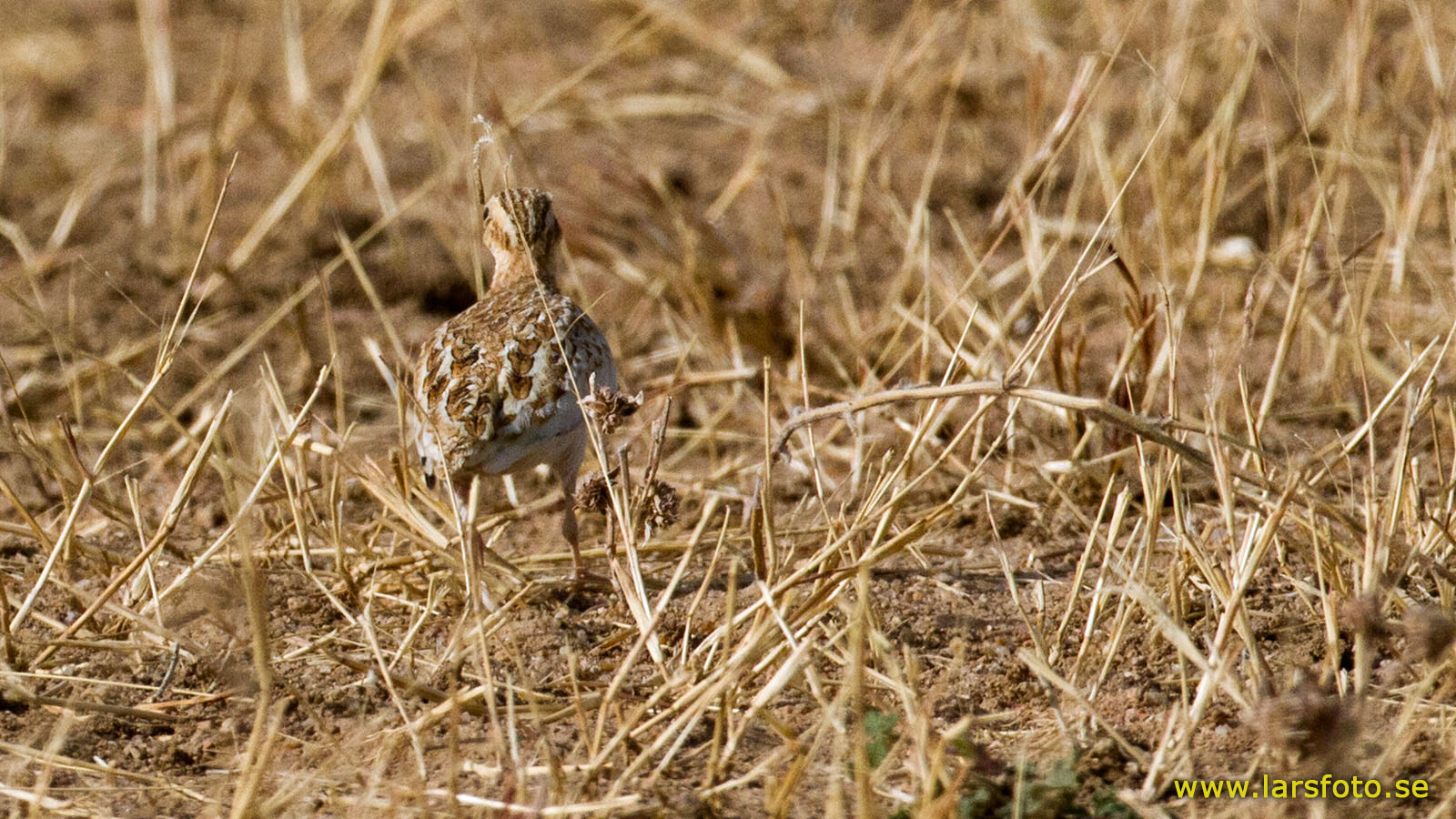
Ortyxelos meiffrenii
TAXONOMY
Turnix meiffrenii Vieillot, 1819, Senegal.
OTHER COMMON NAMES
English: Lark-quail, quail-plover; French: Turnix а ailes
blanches; German: Lerchenlaufhьhnchen; Spanish: Torillo
Alaudino.
PHYSICAL CHARACTERISTICS
3.9–5.1 in (10–13 cm); male 0.6–0.7 oz (16–20 g), female larger.
Tiny, gracile, courser-like buttonquail, mottled red with pale
belly. Wings and tail longer than in Turnix, dark with conspicuous
white flashes in flight. Female has redder breast and broader
white tip to tail. Juvenile duller and paler, more mottled.
DISTRIBUTION
Tropical Africa from Senegal east to Sudan and Kenya, including
south Ghana and possibly elsewhere in west Africa.
HABITAT
Dry, sparse grassland, savanna, scrub, and dense shrubland.
BEHAVIOR
Terrestrial. Otherwise little known.
FEEDING ECOLOGY AND DIET
Eats grass seeds and insects obtained from the ground.
REPRODUCTIVE BIOLOGY
Little known. Lays from September to March in the cool dry
season. Possibly monogamouns. Clutch is two eggs, incubated
by the male.
CONSERVATION STATUS
Not threatened. Widespread and uncommon to locally common;
range increasing with expanding deserts.
SIGNIFICANCE TO HUMANS
None known.
Other popular Animals
Photo Gallery of - Lark buttonquail




 Animalia Life
Animalia Life